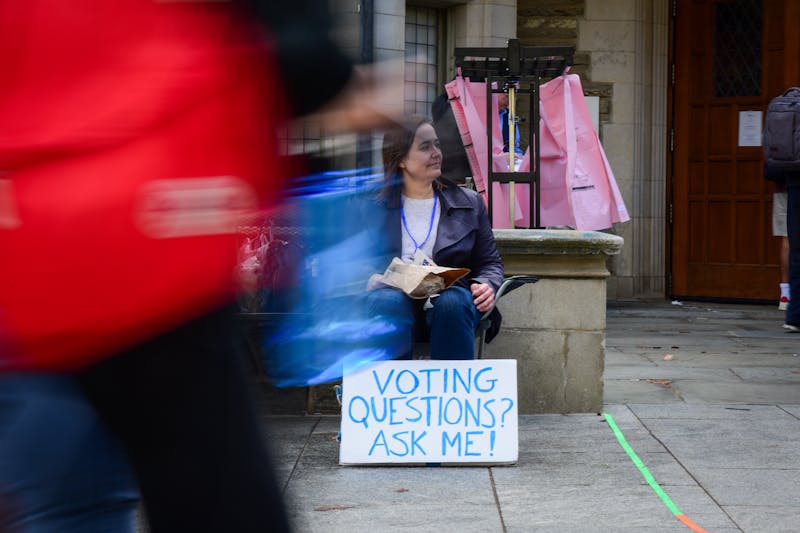When Michael Cohen reclaimed his 300-Euro safety deposit from his Belgium dorm room last year, he had a lot to smile about.
"We were all excited to get it back because the Euro got stronger," the College junior said. "We all joked that we were making money off our housing deposit."
Last August, one Euro amounted to about $1.35. By last Sunday, the dollar depreciated to $1.49 for one Euro. The dollar fared even worse against the British pound, rising to more than $2 to the pound at the end of last year. A pound currently stands at about $1.98.
But the falling dollar hasn't stopped students from studying in Europe yet, according to director of Penn Abroad Geoffrey Gee.
"The truth of the matter is these exchange rates started to go bad more than a year ago, and that was the largest number of students [studying abroad] ever," he added. There are 678 students studying abroad this year, a major increase from the 547 who traveled last year.
Though students who went abroad were often frustrated with the exchange rate, most didn't see it as reason enough to skip out on studying internationally.
"The exchange rate isn't so bad to deter you from going abroad," said College junior Ryan Benjamin, who studied in Barcelona last fall.
He added that many prices appeared to be less expensive than those in the United States, but after the conversion, prices were relatively equal.
But for some students, the low value of the dollar made a difference in their study abroad plans.
"One of the main reasons I didn't want to go to London is because the pound is so terrible," Cohen said.
Students who did choose London said the exchange rate was certainly an issue.
"I thought it was a huge deal," said College senior Meghan Daly, who spent last spring at Kings College in London. "Just a trip to the grocery store ended up costing a great deal."
By the end of her time there, she had spent so much of her money traveling that she was limited to a box of cereal and milk a day.
"I think it's an extraordinary city with a lot to offer, and one can survive a semester there," Daly said. However, "it's a deterrent for people who are considering a year."
Nevertheless, the United Kingdom remained students' destination of choice, with 153 students studying there this year. Australia came in second with 92 students.
Gee explained that financial-aid packages adjust to the cost of being abroad, so financially aided students are "in less bad shape than the people who are in the economic middle class."
He added that there is not a lot of outside scholarship aid available to students at the undergraduate level, though some does exist, such as the National Security Education Program for the Study of Critical Languages.
The Penn Abroad office tries to prepare people for dealing with the exchange rate at the orientation sessions, Gee said.
But ultimately, many students have to fend for themselves. For College Senior Eric Schwartz, who spent the Fall 2006 semester in Barcelona, it was a matter of trial and error.
"Truthfully, I brought a bunch of different options for payment, and I just ended up figuring out which ones worked," he said.
The Daily Pennsylvanian is an independent, student-run newspaper. Please consider making a donation to support the coverage that shapes the University. Your generosity ensures a future of strong journalism at Penn.
DonatePlease note All comments are eligible for publication in The Daily Pennsylvanian.







